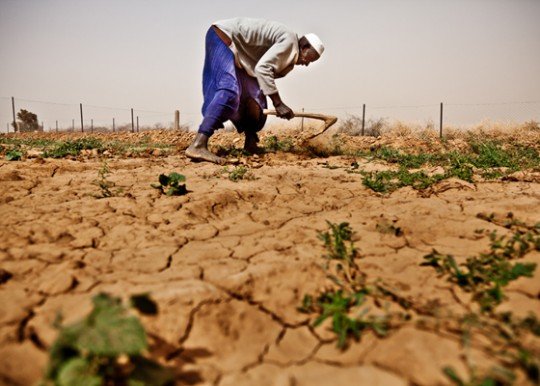1. The people who are causing the least emissions are suffering the most

More extreme weather conditions are already producing unprecedented droughts and flooding across the developing world. Just this month the severity of the El Nino weather system threatens to leave 4 million people in Papua New Guinea without water. The nation is one of the poorest countries in the world 83% of its food is produced in-country, meaning severe weather could be catastrophic for food security.
2. Poorer women are bearing the brunt of this suffering

Given that in many of the world’s poorest countries women are acknowledged as owners of crops rather than land, when extreme weather conditions hit they are more vulnerable to destitution. For example, a yield of crops can be totally washed away by a flood but the land it’s on cannot, so the crop owner is worse-off while the landowner does not lose their asset.
Women also lack access to timely climate information. For example, when El Nino struck Peru in 2002, only fishermen were informed due to its potential to affect fish supplies, despite women managing all household budgets.
3. It’s affecting how many fish there are in the sea

According to a recent report from the UN climate panel, extreme changes in weather and ocean conditions have meant that fish catches in some of the tropics are down between 40 and 60%.
4. Prices are increasing, which means political instability

The decline in water availability caused by climate change, as well as erratic flood-drought patterns, has already led to increasingly unstable food prices across the world. Many developing countries are having to rely on food imports, which is particularly expensive given global transportation costs are rising as well.
Many have suggested an increase in food prices were at the root of such recent political upheavals as the Arab Spring. While political change is not always a bad thing, it does pose a risk- an IMF report charting food prices from the 1970’s argues that there is a strong link between rising food prices and ‘deterioration of democratic institutions.’
This trend is only likely to get worse- estimates from the Institute for Food Policy Research suggest prices for certain foods, including maize and sorghum which are the staple diet for a majority of sub-Saharan Africans, could increase by over 100% by 2050.
Food security is a global concern. You can make it a priority for world leaders by sending a tweet in TAKE ACTION NOW.